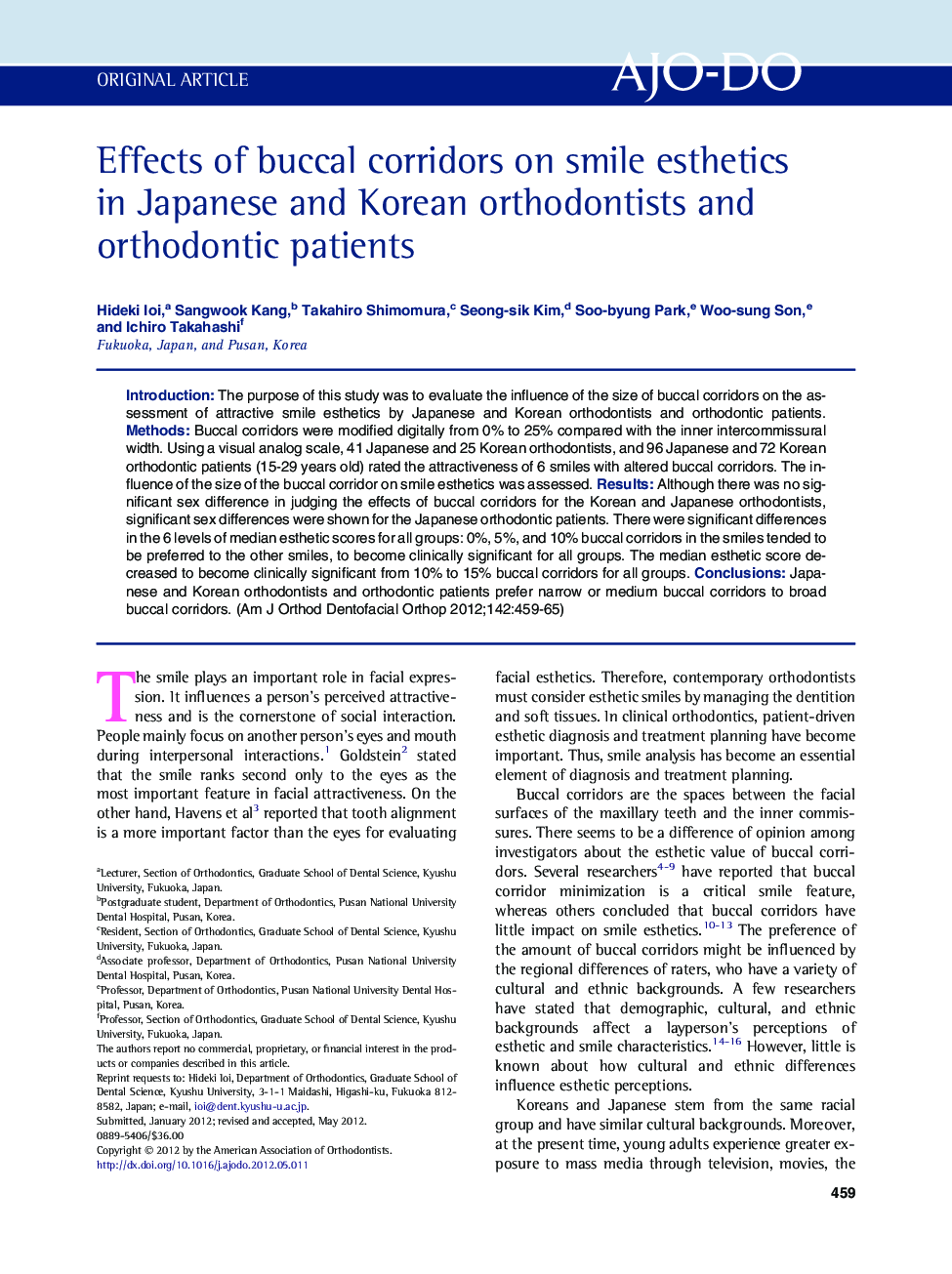| Article ID | Journal | Published Year | Pages | File Type |
|---|---|---|---|---|
| 3117015 | American Journal of Orthodontics and Dentofacial Orthopedics | 2012 | 7 Pages |
IntroductionThe purpose of this study was to evaluate the influence of the size of buccal corridors on the assessment of attractive smile esthetics by Japanese and Korean orthodontists and orthodontic patients.MethodsBuccal corridors were modified digitally from 0% to 25% compared with the inner intercommissural width. Using a visual analog scale, 41 Japanese and 25 Korean orthodontists, and 96 Japanese and 72 Korean orthodontic patients (15-29 years old) rated the attractiveness of 6 smiles with altered buccal corridors. The influence of the size of the buccal corridor on smile esthetics was assessed.ResultsAlthough there was no significant sex difference in judging the effects of buccal corridors for the Korean and Japanese orthodontists, significant sex differences were shown for the Japanese orthodontic patients. There were significant differences in the 6 levels of median esthetic scores for all groups: 0%, 5%, and 10% buccal corridors in the smiles tended to be preferred to the other smiles, to become clinically significant for all groups. The median esthetic score decreased to become clinically significant from 10% to 15% buccal corridors for all groups.ConclusionsJapanese and Korean orthodontists and orthodontic patients prefer narrow or medium buccal corridors to broad buccal corridors.
